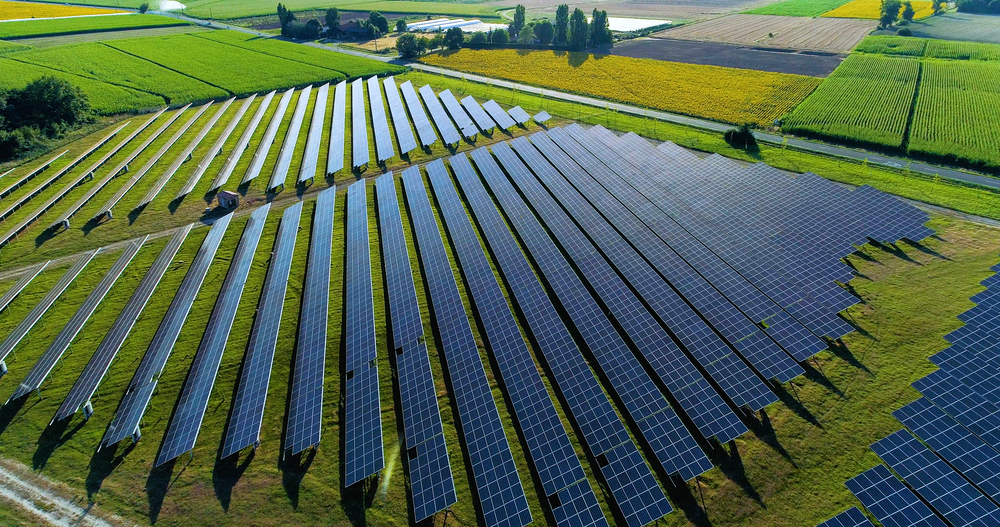Canadian Carbon Reduction Incentives: What You Should Know

Canada has a variety of incentives aimed at reducing carbon emissions, and Unison Energy’s comprehensive and tailored carbon reduction solutions can help taxable corporations make the most of these initiatives.
Canada has introduced several incentives and taxes to reduce carbon emissions and increase investments in renewable energy.
Understanding the Greenhouse Gas Pollution Act (GGCPA)
First adopted in June 2018, Canada’s Greenhouse Gas Pollution Pricing Act (GGPPA) looks to mitigate climate change with two pricing mechanisms: a federal fuel charge and a performance-based system called the Output-Based Pricing System, which ensures a price incentive for industrials to reduce their emissions and prompt innovation against “carbon leakage.” While Canada’s carbon tax is currently set at $65 per tonne of greenhouse gas emissions, that will increase to $170 per tonne by 2030, amplifying the effects of this legislation.
However, Canada’s federal carbon charge under the GGPPA is applied differently depending on geographic location. The fuel charge on fossil fuel distributors, producers, and certain users applies in Ontario, Manitoba, Yukon, Alberta, Saskatchewan, and Nunavut. On the other hand, the Output-Based Pricing System applies in Manitoba, Prince Edward Island, the Yukon, Nunavut, and part of Saskatchewan.
Below is a list of taxes and incentives that apply in Canada based on territory:
| Province/Territory | Carbon Pricing |
| Alberta | Federal |
| British Columbia | BC Carbon Tax |
| Manitoba | Federal |
| New Brunswick | Output-Based Pricing System |
| Newfoundland and Labrador | Provincial Carbon Tax |
| Nova Scotia | Cap and Trade |
| Ontario | Federal |
| Prince Edward Island | Carbon Levy |
| Quebec | Cap and Trade |
| Saskatchewan | Federal |
| Northwest Territories | Carbon Tax |
| Nunavut | Federal |
| Yukon | Federal |
Introducing the Clean Technology Investment Tax Credit
Canada’s Department of Finance released draft legislation for the Clean Technology ITC. This investment tax credit allows for a refundable credit of up to 30% on qualifying clean technology property acquired and put into use after March 27, 2023. This credit will undergo a gradual reduction to 15% in 2034 and will be completely phased out thereafter. Aligned with the ‘Made in Canada’ strategy, this approach mirrors the global trend favoring domestic production and labor, akin to the U.S. Inflation Reduction Act. The Clean Technology ITC, serving as a refundable incentive covering a portion of a corporation’s capital investment cost, will enable a 30% tax deduction for renewable technologies implemented until 2034.
The types of property available for the Clean Technology ITC include:
- Equipment employed for harnessing solar, wind, and water energy to generate electricity
- Immobile electricity storage equipment
- Actively operating solar heat equipment, ground-source heat pumps, and air-source heat pumps
- Charging and refueling equipment and non-road, zero-emission vehicles
- Concentrated solar energy equipment
- Equipment used to generate electricity or heat energy from geothermal energy, but not equipment or systems that extract both heat from a geothermal fluid or fossil fuels for use or sale
- Small modular nuclear reactors
This tax credit applies only to clean technology properties of taxable Canadian corporations, which must be located and operated exclusively in Canada. This credit cannot be applied to clean technology property that was used or leased for any purpose before it was acquired by the taxpayer.
Digesting Ontario’s Global Adjustment Policy
Ontario’s Global Adjustment (GA) Policy was instituted in 2005 to cover various costs incurred in the generation and distribution of electricity while providing a stable and reliable supply of electricity. The GA is a variable component in electricity pricing and it reflects the difference between the market price of electricity and the total cost of providing it. When the market price is lower than the total cost, the GA helps bridge this gap.
The rate varies from month to month, and it tends to be higher when the Hourly Ontario Energy Price (HOEP) is lower. The rate is also impacted by new projects coming online and changes in the level of electricity demand. Consumers who pay market prices or have retail contracts will see the GA as a separate line on their electricity bills because it represents the portion of the cost that is not covered by the market price. While all Ontario electricity consumers pay for GA, this cost can be avoided by limiting the consumption of high-demand electricity, either through on-site electricity generation or conservation.
While GA costs were initially modest when the policy was first instituted, these charges for Class A companies have risen dramatically — surpassing $100,000 per MW consumed during the Ontario grid’s five highest demand hours. Since the GA involves a proportional distribution of costs, Class A companies can potentially decrease or entirely eliminate their allocation by minimizing electricity consumption during the annual top five demand peaks.
How Unison Energy Can Support the Canadian Energy Transition
With an on-site, cogeneration-based microgrid, Canadian corporations can get reliable energy, lower costs on their energy bills, and potentially, tax incentives. Combined heat and power (CHP) systems generate both electricity and useful heat from the same energy source, leading to increased energy efficiency. These systems provide companies with greater control over their energy consumption because, during peak demand periods when GA costs are typically higher, companies can rely on their on-site generation to meet a portion or all of their electricity needs and reduce their exposure to elevated grid prices. By generating electricity on-site, companies become less dependent on external electricity suppliers and the associated grid costs. Finally, microgrid systems provide a reliable and continuous source of power that allows corporations to maintain operations during peak demand and grid stress.
Unison Energy’s carbon emission-reducing solutions additionally include hydrogen and renewable natural gas, solar panels and battery storage, carbon capture and sequestration (CCS), and power for electrified fleets. With hydrogen and renewable natural gas, clients can incorporate alternative low-carbon fuels into their energy mix to reduce their carbon intensity, while solar panels and battery storage give facilities the ability to offset their energy demand which reduces their carbon footprint by 10-20%. Finally, carbon dioxide emitted in flue gas from boilers can be captured, reused, or sequestered. The captured carbon can also be stored permanently underground or transported via rail where it can be stored in geological formations.
Unison Energy is your partner in the energy transition. Contact us today to learn how our comprehensive carbon reduction solutions can help Canadian businesses take advantage of the Clean Technology ITC, reduce emissions, and lower energy costs.
Energy insights, delivered
Subscribe for more content.
